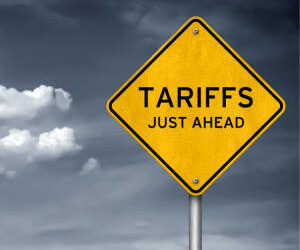Investment client behaviour stories from Behavioural Economist, Morgan Housel
Not the smartest in the room but the hardest working. Everyone’s met that person at some point – the childhood friend or former classmate whose diligence and drive saw them slog their way to a position well in excess of what they might reasonably have been expected to achieve.
Consider the case of Brian, a young man of moderate ability whose burning goal as a teenager was to become a doctor. This was a dream he eventually achieved, a decade after his peers, by virtue of unremitting hard work and focus.
Despite his extraordinary achievement, Brian reported feeling deeply unsatisfied just a few years after graduating. The long hours and high stress levels of the medical profession left him as disappointed with his situation as he had been before becoming a doctor.
His story shows how wrong people can be when forecasting how their future selves will think and feel.
This is especially the case when it comes to investment and the management of risk. Individuals are required to simultaneously anticipate future rewards and consider how they might react should things go badly. That’s tricky.
Expectations and outcomes
As human beings, it’s natural for us to follow the path of least resistance when we’re contemplating future events and how we’ll respond to them.
This makes it possible to dream about circumstances and events in a vacuum and disregard or minimise any negative factors that come along with them, as the young Dr Brian did.
Hence, many people contemplating an investment proposition have no difficulty visualising the upside, in terms of surging prices and profits, but considerable difficulty truly imagining the downside – right up to the moment they’re confronted with the unpleasant reality of crashing valuations and prices.
This mindset can lead investors to believe they’ll be sanguine enough to view every downturn as an opportunity, rather than a calamity or cause for concern.
In reality, investors may feel more fearful when their investments are tanking, and greedier when they’re surging, than they are ever able to anticipate.
Learning from the past
In the risk questionnaire approach to investment advisers ask clients to imagine how they might feel should they lose a percentage of their money. A portfolio is built based on the results of the survey.
However, past behaviour may be a more reliable guide to future behaviour than subjective self-assessment. How clients responded to their last big win or loss, or coped with a stressful project or difficult life circumstance, is a good indication of how they are likely to deal with adverse investment outcomes in the future.
Understanding this and helping clients develop genuine insight into their personal tolerance for risk can be a very worthwhile exercise for advisers. It can lead to stronger relationships which are better placed to weather the emotional turmoil generated by the market ups and downs that are an unavoidable feature of any long-term wealth building journey. Advisers should keep this in mind when building strategies for clients.
Behavioural Economist and former Wall Street Journal columnist, Morgan Housel uses history, psychology, and recent business trends to tell stories about how investors, economists, and business leaders go astray, and what they can do to overcome their own biases and pitfalls.
BTNext 2018 offers a unique opportunity to hear Morgan Housel discuss “How Understanding Your Clients’ Behaviour Can Grow Your Business” at events taking place in Sydney, Melbourne, Brisbane, Adelaide and Perth between August 20 and 24, 2018. Register at www.bt.com.au/btnext





